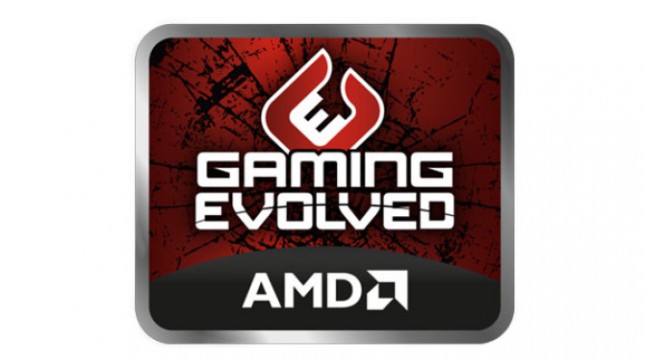How DisplayPort Adaptive-Sync Relates To AMDs Project FreeSync
By
This morning VESA announced that DisplayPort Adaptive-Sync has been ratified as part of the DisplayPort 1.2a video standard. This is a very big deal for gamers as Adaptive-Sync should provide smoother, tear-free images for gaming and judder-free video playback. DisplayPort Adaptive-Sync enables the display to dynamically match a GPUs rendering rate, on a frame-by-frame basis, to produce a smoother, low latency, gaming experience. This might sound similar to what NVIDIA has done with their NVIDIA G-SYNC Technology that was announced back in October 2013. AMD quickly announced FreeSync as a non-proprietary alternative to NVIDIA G-Sync, but needed to wait for it to become ratified as part of the DisplayPort standard as it is part of the secret sauce in AMD’s FreeSync technology. To better explain what the role of DisplayPort Adaptive-Sync is and how it relates to AMDs Project FreeSync take a look at the Q&A from AMDs Robert Hallock below.
What is DisplayPort Adaptive-Sync?
A: DisplayPort Adaptive-Sync is a new addition to the DisplayPort 1.2a specification, ported from the embedded DisplayPort v1.0 specification. DisplayPort Adaptive-Sync provides an industry-standard mechanism that enables real-time adjustment of a monitors refresh rate of a display over a DisplayPort link.Q: What is Project FreeSync?
A: Project FreeSync is an AMD effort to leverage industry standards, like DisplayPort Adaptive-Sync, to deliver dynamic refresh rates. Dynamic refresh rates synchronize the refresh rate of a compatible monitor to the framerate of a users AMD Radeon graphics to reduce or eliminate stuttering, juddering and/or tearing during gaming and video playback.Q: How are DisplayPort Adaptive-Sync and Project FreeSync different?
A: DisplayPort Adaptive-Sync is an ingredient DisplayPort feature that enables real-time adjustment of monitor refresh rates required by technologies like Project FreeSync. Project FreeSync is a unique AMD hardware/software solution that utilizes DisplayPort Adaptive-Sync protocols to enable user-facing benefits: smooth, tearing-free and low-latency gameplay and video.Q: Is DisplayPort Adaptive-Sync the industry-standard version of Project FreeSync?
A: The DisplayPort Adaptive-Sync specification was ported from the Embedded DisplayPort specification through a proposal to the VESA group by AMD. DisplayPort Adaptive-Sync is an ingredient feature of a DisplayPort link and an industry standard that enables technologies like Project FreeSync.Q: What are the requirements to use FreeSync?
A: To take advantage of the benefits of Project FreeSync, users will require: a monitor compatible with DisplayPort Adaptive-Sync, a compatible AMD Radeon GPU with a DisplayPort connection, and a compatible AMD Catalyst graphics driver. AMD plans to release a compatible graphics driver to coincide with the introduction of the first DisplayPort Adaptive-Sync monitors.Q: When can I buy a monitor compatible with Project FreeSync?
A: AMD has undertaken every necessary effort to enable Project FreeSync in the display ecosystem. Monitor vendors are now integrating the DisplayPort Adaptive-Sync specification and productizing compatible displays. AMD is working closely with these vendors to bring products to market, and we expect compatible monitors within 6-12 months.Q: What AMD Radeon GPUs are compatible with Project FreeSync?
A: The first discrete GPUs compatible with Project FreeSync are the AMD Radeon R9 290X, R9 290, R7 260X and R7 260 graphics cards. Project FreeSync is also compatible with AMD APUs codenamed Kabini, Temash, Beema, and Mullins. All compatible products must be connected via DisplayPort to a display that supports DisplayPort Adaptive-Sync.Q: How is Project Freesync different from NVIDIA G-Sync?
A: While both technologies have similar benefits, G-Sync uses expensive and proprietary hardware. In contrast, Project FreeSync utilizes the industry-standard DisplayPort Adaptive-Sync specification to promote wider adoption, lower cost of ownership, and a broad ecosystem of compatibility.Q: Why should gamers purchase a system that utilizes Project FreeSync?
A: Project FreeSyncs ability to synchronize the refresh rate of a display to the framerate of a graphics card can eliminate visual artifacts that many gamers are especially sensitive to: screen tearing, input lag, and stuttering. Project FreeSync aims to accomplish this through an open ecosystem that does not require licensing fees from participants, which encourages broad adoption and low end-user costs.Q: What is the supported range of refresh rates with FreeSync and DisplayPort Adaptive-Sync?
A: AMD Radeon graphics cards will support a wide variety of dynamic refresh ranges with Project FreeSync. Using DisplayPort Adaptive-Sync, the graphics card can detect and set an appropriate maximum and minimum refresh rate based on the capabilities reported by the display. Potential ranges include 36-240Hz, 21-144Hz, 17-120Hz and 9-60Hz.

